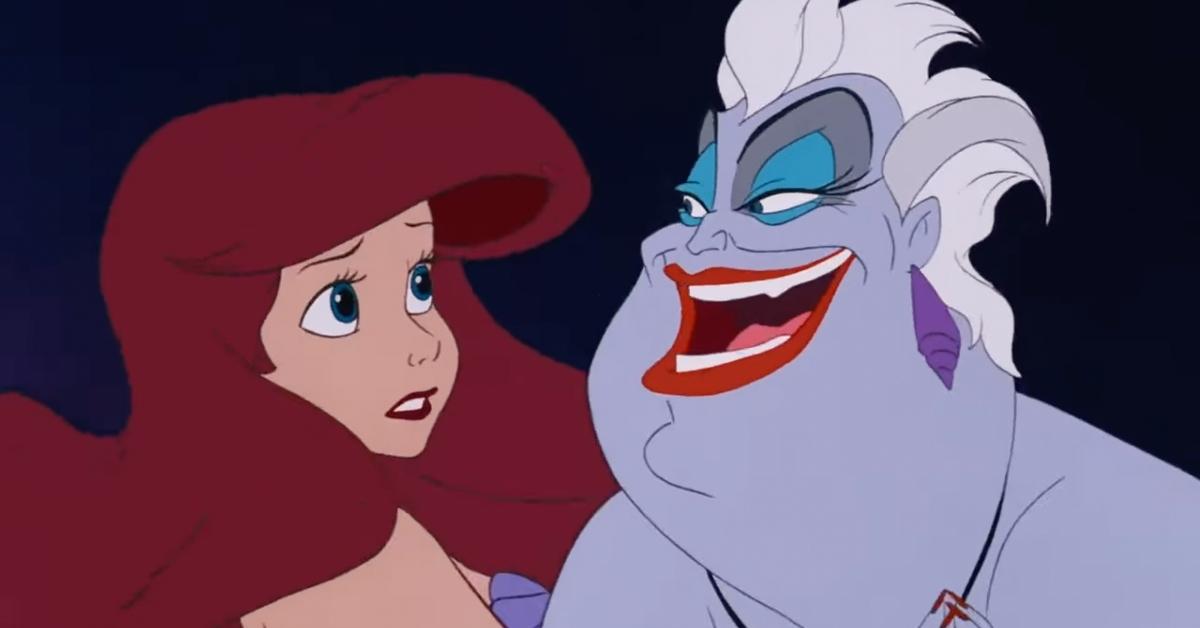Let's Revisit the Not Safe for Work Reason Why 'The Little Mermaid' VHS Cover Was Banned
There was a poor, unfortunate mistake made on the VHS cover of 'The Little Mermaid.'
Published Nov. 17 2025, 12:46 p.m. ET

The magic of moviemaking is often marred by alleged controversies that evolve into urban legends. One of the more haunting stories comes from The Wizard of Oz and involves an actor possibly hanging themselves. Viewers have pointed out a disturbing silhouette in a scene where the Scarecrow, Dorothy, and the Tin Man are skipping down the Yellow Brick Road. It turns out that was just a large bird production borrowed from the Los Angeles Zoo.
Some urban legends are a bit more fun, like the rumor surrounding Marty McFly's hoverboard in Back to the Future 2. Word on the street is that the hoverboard was real but wasn't sold to the public because a parents' group felt it wasn't safe for kids. This was a joke started by director Robert Zemeckis, who is a big kid at heart. There are some urban legends that are sassy to say the least, like the one about the VHS cover of The Little Mermaid getting banned. Here's what we know.

Why was the 1990 VHS cover of 'The Little Mermaid' banned?
The original Disney animated version of The Little Mermaid was released in November 1989 and was an immediate hit. Its popularity shocked everyone and changed the trajectory of Walt Disney Studios forever. Because this was the gift that kept on giving, it makes sense that Disney would rush to get it out on VHS.
Disney's interest in capitalizing on The Little Mermaid's success meant that six months after it hit theaters, fans could watch it at home. In May 1990, the VHS version of the beloved cartoon was out in stores. Unfortunately, it didn't take long for people to notice something about the box art and, in particular, King Triton's castle. One of the towers looked suspiciously phallic. Was the person responsibly being cheeky, or was this merely a coincidence?
Bill Morris is the illustrator behind the controversial artwork. He addressed the scandal in a post on 13th Dimension. He is frequently asked if he is the man behind the now-infamous penis painting. According to Bill, the rumor involved an angry illustrator who was fired and thus exacted his revenge by adding the unwanted member to the box art. That's not what happened.
Bill Morris is not a creep. He was just in a hurry.
When Bill started illustrating for Disney, he became known as the "cartoon guy." His talents were used to draw posters for the re-releases of classic Disney animated films. He was the man behind the posters for Peter Pan, Lady and the Tramp, The Jungle Book, and more. One day he got a call about a Disney Home Video job, but they needed the work done quickly.
Bill was asked by his boss if he was willing to work on the VHS box art for The Little Mermaid over the course of a single weekend. He said yes and got right to work. "The art director sent over a layout and a sketch, and I worked from the sketch for the main characters," recalled Bill. "I used my drawings of Triton, Ursula, and the castle from the poster, since they were unchanged in the layout."
Because Bill was working under strict time constraints, his pacing was off. He remembered spending a lot of time on the main characters before realizing the background art needed to get done. "I probably painted the castle at around 3 a.m. the day it was due," said Bill, "so although the drawing is the same as in the poster, the rendering is rushed and many fine details were left out." At the end of the day, it was all a mistake that thankfully didn't cost Bill any future work.